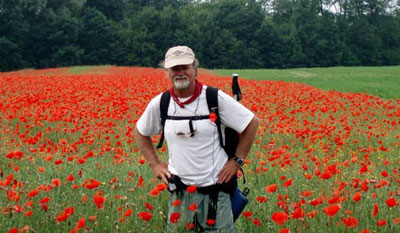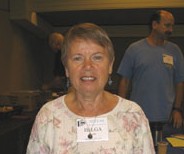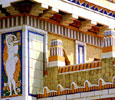As luck would have it, in Katmandu we discovered the border opened just the day before—for the first time in decades. Synchronicity. The Chinese gave us sixty-day visas. Their only restriction was that we’d have to take their tour in Lhasa, but then we could walk 1,000km back to Katmandu along an ancient Buddhist pilgrimage trail.
Even before we left the Himalayan capital, we were surrounded by soldiers and reminded of the harsh conditions facing Tibetans today with their brutal occupation. So we bought a set of prayer flags with the intent of presenting them to the King of Nepal—if we made it back to Katmandu—in the hope he would fly them as a symbol of solidarity with the Tibetan people.
5. Please tell us about some of the practicalities involved in this trip: what about luggage, where did you sleep, how did you deal with the physical demands of this experience?
We carried backpacks with a tent and sleeping bags, plus all the gear you’d expect on a Himalayan expedition at 12-17,000 feet. However, we only took five days worth of food, expecting to buy more along the way. Just outside of Lhasa, we bought a Tibetan horse named Sadhu, who quickly became our buddy and a terrific icebreaker with the locals.
Cheryl and Sadhu adrift on the wild Tibetan plains.
Image © Brandon Wilson
6. Please tell us about your route and some of the complications.
In 1992, things were much different than they are today. Most of the east-west road was gravel and poorly marked. The “latest” maps didn’t even show the airport. Over the next forty days we found ourselves a little lost, we were shot at by Chinese soldiers, we walked through a blizzard, puked from a bronchial infection, I cracked a rib from coughing over a dung fire, plus it was always uncertain where (or if) we’d find food, water or a place to sleep. Much to our chagrin, there were very few stores or markets along the way and I quickly lost 25% of my body weight. (As a weight loss plan though, I really can’t recommend it.)
7. What about your experiences with the locals? What did you learn about Tibetan culture?
All those difficulties made us more dependent on the kindness of strangers. As it turned out, we only used our tent two nights. The rest of the time we were invited into locals’ homes. We slept on their floors or in their courtyards or stables and often shared a cup of yak butter tea with them. Many of them were former monks and spoke a smattering of English. In secret, they’d unveil their altar and speak of their steadfast faith in the Dalai Lama’s return. I was astounded by their unshakable faith and have since become a staunch supporter of their human rights.

Young Lhasa monk. Image © Brandon Wilson
8. What did you learn from this experience and how has it affected your life?
It taught us the beauty of slow, deliberate travel. Discovering a place and culture by walking is such an entirely different experience than traveling by car or even bicycle. It slows down reality and allows you to wallow in the minutiae. You reconnect with the earth and have time to work through harbored feelings, ideas and emotions. You disconnect from the frenzy of the modern world and reconnect to the more natural one. Walking becomes a Zen-like transcendent experience, a trampoline for the mind.
9. Please tell us about the book you wrote about this experience “Yak Butter Blues”.
Each day along the way, I wrote about our experiences while they (and the blisters) were still fresh. I described the unique people we met as well as the thoughts passing through my sun-addled brain. The award-winning book is a true story of our survival interwoven with that of the Tibetan people. It is candid, gritty and provides an intimate look at a culture facing extinction. We feel honored to have preserved this moment in time and felt a responsibility to set adrift this message in a bottle so that others can discover an inspiring glimpse of the Tibetan people’s courage for themselves—hopefully before it’s too late.

In Everest’s Shadow approaching the North Face
Image © Brandon Wilson




